Legend of Vitasta- the cradle of Sanskrit civilization of Jammu Kashmir
24 Sep 2020 10:39:11
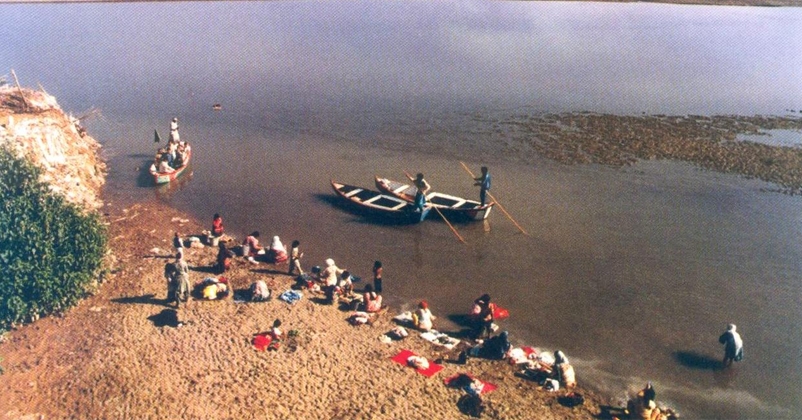
Vedic civilization flourished along the course of the legendry river Saraswati. The people of Kashmir valley lived on the banks of the river Vitasta, flowing across the entire valley of Kashmir, from the foot of the Pir Panchal mountain range, where its source is located at Verinag, to its conflunence at the Jehlum village, with the river Krishen Ganga, flowing in the territories of the Jammu and Kashmir under the occupation of Pakistan.
The Hindus of Kashmir, very much like the Saraswat people, built their Tirthas and their places of Worship along the banks of river Vitasta. The Vedic people venerated rivers, worshipped them as the embodiment of the divine mother Bhavani, and praised them as the source of life and means of its sustenance. For the Hindus of Kashmir, the Vitasta is the embodiment of Goddess Parvati, consort of Lord Shiva. Vedic literature refers to Vitasta as a prominent river of north India. Vitasta is mentioned in the Mahabharta as well.
Vitasta Mahatmya and different legends connected with it
In the Nilmat Purana, Vitasta is called Nilja, the daughter of Nil Nag, the son of Kashyapa, who drained out the waters of the lake, Satisar, which once filled the valley of Kashmir. The birth of Vitasta is described in the Nilmat Purana. Pandit Kashi Nath Dhar, a Sanskrit scholar of Kashmir, refers to Nilmat Purana and notes,"the contact with Pishachas had made the inhabitants of the valley unclean, hence to purify them Kashyapa requested Lord Shiva to prevail upon his consort, Parvati, to manifest herself in the form of a river. Parvati requested Shiva to make an opening through which she could come to surface after assuming the form of a river. There upon Lord Shiva struck the ground with his trident, which measured one 'Vitasti' and through this fissure the goddess Parvati quashed forth in the form of Vitasta. The name Vitasta was given to her (this river) by Lord Shiva himself." Nilmat Purana refers to sixty rivers of Kashmir and Madra. "But among them", Dhar notes, "Vitasta wields the highest importance and respect, which can be testified by an account in the Nilmata that this river disappeared twice and only consented to flow permanently when given the company of other goddesses i.e. Ganga in the form of Sindhu in Kashmir. Godavari in the form of Gudar and Vishoka in the form of Lakshmi."Vishoka is now known as the Vishay which forms a tributory of Vitasta.
A reference is made to the river Vitasta in the ancient text of "Haracaritacintamani", an epic of thirty cantos written by the poet Rajanaka. He was the brother of Saivacharya Jayarath who composed the Shaiva treatise named “Tantra Lokaviveka". The epic gives a vivid description of the Tirthas, and the pilgrimages along the course of the Vitasta, unravelling the spiritual heritage of the people of Kashmir.
An eulogical description of the river Vitasta and its religious significance is given in the Vitasta Mahatmayas. The Vitasta Mahatmayas bring to surface the close linkage between Vitasta and the course of evolution of the Sanskrit civilization of Kashmir, the material culture of its people and their spiritual achievements. Possibly more than one Vitasta Mahatmya was composed, but only two of the Mahatmayas are extant. Both the Mahatmayas narrate at length the origin and source of the river Vitasta, describe the course it takes and provide an elaborate description of the Tirthas, the places of pilgrimages located along its banks.
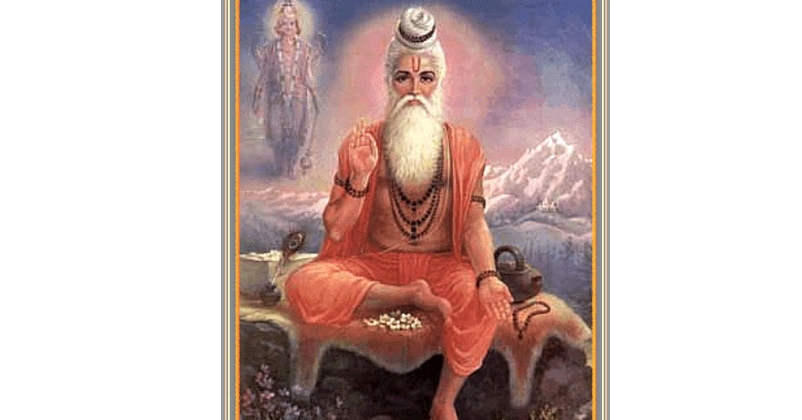
According to the Vitasta Mahatmayas, which do not differ much from each other, Kashmir was a huge lake known as Satisar, formed of waters collected in a trough rimmed by the Himalayan mountain range and the Pir Panjal mountain range. Kashyapa Rishi requested Balram, the elder brother of Lord Krishna, to drain out the waters of Satisar. He also requested Lord Vishnu to destroy the demon Jalodbhava, who had made Satisar his abode. Jalodbhava troubled Rishis and other seers and their followers who lived along the banks of the lake. The Mahatmays record, that Balram acceded to the request of Kashyapa and opened up a gorge in the mountain barrier at Khandan Yar, some distance ahead of Varahmulla, present Baramulla, with a stroke of the plough, which he wielded as his weapon of war, to let out the waters of the lake Satisar. As the waters of the lake began to recede, Lord Vishnu destroyed the demon Jalodbhava.
The Vitasta Mahatmayas, record that Goddess Uma, Laxmi, Aditi, Sachi, Diti, Ganga and Karishni had come to Satisar along with their spouses to see the draining out of the water and elimination of Jalodbhava. Rishi Kashyapa requested them to bless the land by assuming the form of water to purify it from the sins of demons as he considered Sati Desh most sacred and pure. The Rishi approached Goddess Uma first. She requested her consort Lord Shiva; "O, father of the World, I shall assume the form of a river but make a stroke with your spear near the abode of Nila, where O Lord while breaking the mountain was placed the pointed end of the plough. By that stroke, I shall flow to meet the great river Sindhu."
As soon as Lord Shiva struck his trident and made a hole equal to a Vitasti, about four inches long, water sprouted forth. Lord Shiva named the river as Vitasta as it was formed by a Vitasti. The place where the spring was formed, came to be known as Vitasatra. With the passage of time, it became Vyeth Vathur. No sooner did the sinners bathe in the spring, Vitastatra disappeared. Rishi Kashyap prayed to Goddess Uma to reappear. She appeared at Panzhast (Panzeth) a village near Qazigund. There too sinners defiled her water. She disappeared again, but Rishi prayed to her to reappear to sanctify Kashmir. She granted his request and appeared at Chakra. There also sinners bathed in its waters and corrupted it. On Rishi Kashyapa's request and the prayers of thousands of Brahmins, the beautiful spring was brought out at the hermitage of Rishi Narsimha. Rishi Kashyapa worshiped Goddess Uma with great devotion. He prayed and requested her that she had powers to purify the sinners and sanctify the land. On his repeated entreaties, the Goddess promised that she would not disappear any further and assumed the form of water at all the four places --Vitastra, Pazhast, Chakra and at the hermitage of Narasimha. She also told him to pray to other Goddesses to assume the form of water and join her to sanctify Sati Desha ever after. Lord Shiva granted the boon that the river formed by many streams would be called the Vitasta.
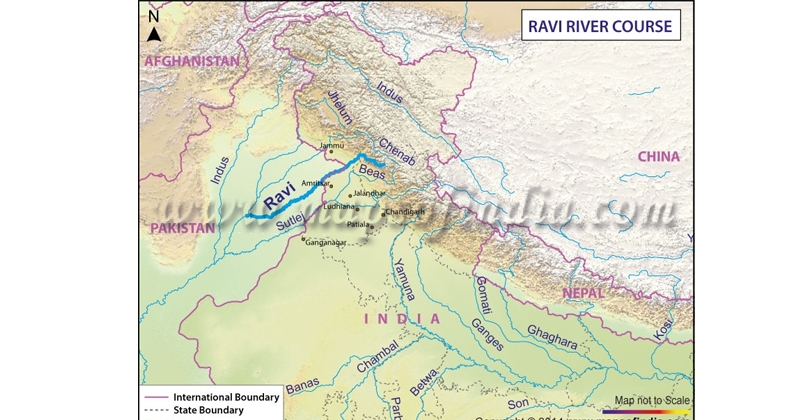
Rishi Kashyap then prayed to Goddess Laxmi. The Goddess appeared at the foot of Kramsara, Vishnu Paad and became known as Vishoka, meaning without grief. She was joined by Ramya at Tokna. Both of them joined Vitasta at Ghambheera or Sangam below Bijbehara. Vishoka got corrupted to Vaishav and Raamya to Rambhi Aara. Ramya is the sister of Shorash Naga or Shesh Nag. The water of Shesh Nag joins Lambodhari,(Lidar) at Pahalgam. Lidar joins Vitasta between Khanabal and Bijbehara.
Aditi, the mother of Devtas, appeared in Brang Pargana and joined Vitasta at Aara Path. Shachi, the wife of Indra, assumed the form of a river and came to be known as Harsha Patha and appeared from Achabal springs. It also joins Vitasta at Aara Patha, besides numerous tributaries from Panzath, Brangi, Trikoti, Verinag, Sandran etc, forming the big Vitasta river. Ganga appeared in the form of Sindhu and joined the river at Shadipura, which is also called Prayag of Kashmir.
The confluence of the Vitasta and its tributaries
Geogical evidence corroborates the legend that valley of Kashmir was filled with water and formed a huge lake. Perhaps the waters of the lake were drained out by geological changes which opened a gorge in mountain barriers to the west of the lake near Baramulla. A well-known geologist DN Wadia writes in 'Geology of Kashmir'; "Pliestocene or post Pliocene deposits of nature of fluviatile, lacustrine or glacial, spread over many parts of Kashmir, occupy a large superficial extent. The most interesting as well as conspicuous examples of these are the lacustrine deposits seen as low flat mounds bordering the slopes of mountains above the modern alluvium of the Jhelum. These are known as Karewas in the Kashmiri language. The Karewas formation occupies nearly half of the Valley. They have a width from eight to sixteen miles along the south-west side of the Valley, extending for a length of some fifty miles from Shopian to Baramulla. They have held to be the surviving remnants of deposits of a lake which once filled the whole valley basin from end to end. The draining of that lake, by the opening and subsequent deepening of the outlet at Baramulla, has laid them bare to denudation, which has dissected the once continuous alluvium into isolated mounds. The mounds are known as ‘Karewas’ and ‘Udar’ in Kashmiri.
The Nilmat Purana, Haracarita Cintamani, Rajatarangini and Mahatmayas, acknowledge that, 'Nila Naga,' 'Nila Kunda, "Vitastatra', now called 'Vyeth Vothur' is the source of the river Vitasta. Perhaps over the years Nila Naga or Nila Kunda, also assumed the ancient name of the territorial district, the Pargna of Vera, in which it is located and came to be called Verinag. The ancient village of Vera must have been a place of many ancient stone temples.
Dhar notes: "The present Shahabad in Anantnag district was known as 'Vera' in the ancient times. Abu-1-Fazal also records this very name for this Pargana. Hence it is no surprise that the spring Nilanaga came to be known as the 'spring' of Vera or Verinaga also. The name of the village came to be associated with this spring and it could be located easily thus. Such Nagas-springs which have the name of the village or the locality in which they are situated, prefixed or suffixed with them, are legion in Kashmir. Abu1-Fazal testifying to its sanctity has recorded that many temples of stone were erected near it. However, these massive temples of stone are not there now, but a small Shivalaya exists still there. These stones must have been used for rennovation and enlosing the spring by later kings. This fact can be easily discerned even now. Moreover, a hamlet in the close vicinity of this spring is known as Verinag even now."
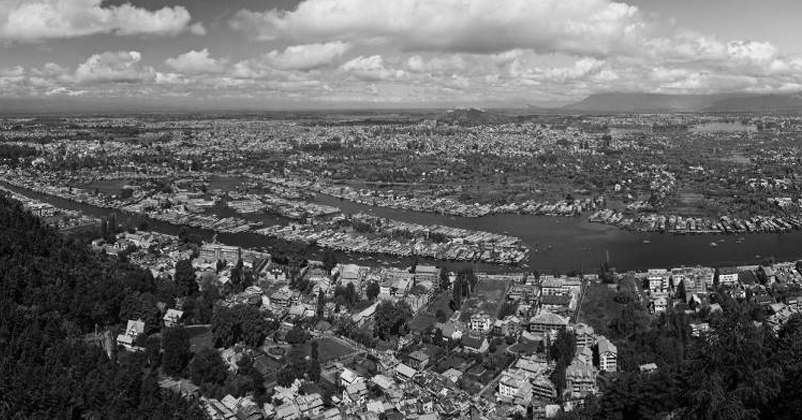
Vitasta originating from Nil Naga, Nil Kunda, Vyeth Vothur or Verinag, is joined by its major tributaries near the Anantnag town. Kashi Nath Dhar notes; "The present Bringi stream called Bhringi, in ancient times is the first to join its waters. From the northeast Arpath stream mentioned in Nilamata as Harsapatha, and from the west waters issuing from springs of Achabal, ancient Aksavala. meet the waters of Vitasta at Khanbal. From the north ancient Ledari, modern Lider, also rushes down with its voluminous waters to join this confluence and the Vitasta flows down majestically to Srinagar in all her glory."
As the river Vitasta winds down its way to Khanabal near Anantnag, the ancient Tirtha of Vijyeshwara presently Vejabror stands on its banks. The Tirtha was built by King Ashoka. The Tirtha suffered damage during the Muslim rule. About five kilometers downstream, Vitasta is joined by its tributaries Veshiva and Rambiar. The confluence of the Vitasta and its tributaries is now called Sangam, its ancient name being Gambira Sangani.On the confluence of Sangam stood a Tirtha which was built by seer Mihirdatta, spiritual mentor of king Chanderapida 686-695 AD. No ruins of the temple are found at Sangam. Dhar notes; "Some miles below Sangam the Vitasta with its replenished waters flows close to the old city of Avantipur founded by king Avantivarman (A.D. 855-883). Ruins of two temples built of stone are seen there now. The Srinagar - Jammu National Highway passes very close to these. This town was very famous even after the death of its founder and finds mention in many chronicles including Rajatarangini. In the time of Avanti Varman, Vitasta was dredged by one Suyya and its course regulated. The scare of floods and famines looming large in the horizon every year was averted." Dhar notes further; "At a distance of five to six miles below on the Udar itself was located the city founded after the name of Lalitaditya Muktapida, known as Lyetpor today. Since this town was built in the absence of the King by his architect, so he did not take kindly to it. At present no ruins of the old city are seen above ground only lovely saffon-fields standing on these Udars greet our eyes. While coming down from these Udars we see the Vitasta touch the fringe of Padampur, called Pampur now-a-days. This township was built by Padma brother of Jaya Devi a concubine of Lalitapida (A. D. 900) and a temple of Vishnu was also erected there. At this place the Vitasta takes a slight curve towards the right just to be quite close to Puranadhisthana (Pandrethan) the old capital of Kashmir built by Praversena. At this place the Buddhists and in turn Vaishnavas and Saivas constructed their places of Worship, the remains of which lie scattered all over".
Vitasta, the cradle of Sanskrit civilization of Kashmir
Vitasta enters the city of Srinagar, known as Pravarapur in ancient times, around the southern slope of Shankaracharya hill. An ancient temple, known as the temple of Shurah yar is situated on the right bank of Vitasta. Srinagar city is situated on both sides of Vitasta, which are joined by several bridges. The banks of Vitasta, where temples are constructed are known as Yaarbal.
About five kilometers downstream Vitasta is joined by Mohasarit now called Tsoonth kol, through which waters of Dal Lake flow out. Mahasarit joins Vitasta at Ksurikaba now known as Khodabal. A temple called Masika Swamin was built on the banks of Mahasarit at the place which is now called Mysum. The confulance of Tsoonth kol and Vitasta was a known Tirtha in ancient Kashmir. Dhar writes; "Bilhana in his Vikramankadeva Caritam (xviii, 28) says that the temple of Siva called Ksemagaurivara was built at this confluence by king ksemagupta, (A. D. 950-958). Mankha refers to it in his 'Srikanthacaritam' as "Maha Sarid Vitstyo Sangam." While Srivara in his Zaina Tarangini gives it more recent name "maari sangam". Evidently this maari is the modern maar which was a useful means of internal transport and extended up to Narvor, Nadavana in Sanskrit, before passing into the marshes of the Anchar Lake.
About a kilometer below the confluence of Mahasarit and Vitasta, a stream Ksipt Kulya now as Kuta Kol flows out of Vitasta, to join it again at Chattabal where the waters of Dood Ganga joins it. An ancient Shiva temple was built on the banks of Vitasta, which was known as Sada Shiva temple. Now the temple is known as Kathlishwar. On the right bank of the Vitasta, just in front of Kathlishwar temple is located the ancient temple known as Soma Tirtha, now called Somyar. Most sacred of the Hindu shrines and temples, many of them of great antiquity, are located on the banks of Vitasta.Ahead of Som Vihar is located the ancient temple of Lallishwari, around which the ruins of a massive ancient temple are strewen about. On the opposite bank are located several ancient temples of Purush Vihar, now known as Purushyar. A kilometer down stream is located the ruins of of the ancient temple dedicated to Mahakali. On the left bank of Vitasta are strewen the ruins of several ancient temples over about three kilometers of its flow. As Vitasta takes a gentle turn westwards, the ruins of Dida Muth, built by Queen Dida, stand in silence. The Dida Muth is now known as Dida Mar, birth place of Roop Bhavani.
More than two kilometers ahead, Vitasta is joined by the waters of Dugda Ganga, now known as Dood Ganga. A tirtha stood on the confluence of the two rivers, of which few remnants can be found now. The waters of Kuta Kol, rejoin Vitasta on its confluence with Dood Ganga. The place is known as Chattabal. On the right side of the confluence of Kuta Kol and Vitasta is located the ancient shrine of Bhokatkeshwar Bhairva.
The waters of the river Sindh join Vitasta at Shadipur. The Sindhu is a mountain stream which flows out of the Gangabal Lake. Sindhu enters the plains at Dodarhama. Gangabal Lake was known in ancient times by the name of Utter Mansa. Kalhan, Haracarita Cintanmai and Nilmat Purana refer to the lake as Uttara Mansa. Harmukat Ganga Mahatmaya also refers to the lake as Uttara Mansa. River Sindhu pour its waters into Anchar Lake at Dodarhama. The waters of Sindhu leave the lake and flow out to join Vitasta at Shadipur.Kashi Nath Dhar notes; "Sindhu in Kashmir has been equated with Ganga in its sanctity and importance. Nilamata, Harcarita Cintamani and Mahatmyas have repeatedly referred to it. Nilamata identifies the Vitasta with the Yamuna and the Sindhu with Ganga the two most famous and holiest rivers of India. Hence their confluence has also been called Prayaga (Nila-v 297). It is held in great esteem and respect by the devouts since very ancient times. However, on the evidence of Kalhana we have to believe that the present position of Sangam is not so very ancient. This confluence was artificially engineered by Suyya while busy in dredging operations for desilting the Vitasta. This was done under the orders of King Avanti Varman (A.D. 855883). He further says that at the former confluence the two temples of Vishnu Svamin and Vainya Svamin were situated close to Phalapora and Parihasapura, Kashmiri (Paraspura), and the confluence which Suyya contrived near Sundaribhavana the temple of Hrsihesa Yogasvamin was erected as it was the deity. Ishtdevi of Suyya.
Parihaspur and Phalapura were two cities founded by Lalitaditya Mukhtapida (750A.D). Relying on evidence of Kalhan, it can be assumed that Vitasta flowed near the two cities just below the Udars---Karewa uplands on which these were situated and the river Sindhu joined Vitasta there. The upland has heaps of ruins, few of which have been excavated. Besides many Budhist monuments, there are many Hindu structures. R.C.Kak, a well known archeologist of Jammu and Kashmir State, writes;"Crossing the ravine in which nestles the little village of Diwar Yakman Pora and ascending the plateau opposite are seen the immense ruins of two extra ordinary large temples, one of them has a peristyle larger than that of Martand. "This bed could be the dry bed of
Vitasta now as it flowed then before its course was changed. The two temples may be the temples of Visnu Swamin and Vainya Swamin built on those heights. At present there is a Shivalya in the middle of the stream, on a pedestal of stones, besides a Chinnar tree. The Prayag at Shadipur is considered as sacred as the Prayag at Allahabad.
Several kilometers down stream is situated the township of Sumbal, situated on both banks of the Vitasta.The town was founded by King Jayapida when he built the ancient capital of Kashmir, Jayapura on the banks of Vitasta in the eighth century A.D.
Ahead of the Sumbal bridge to the left is situated the shrine of Nandi Kesvara alluded to Nandi Kesava. A short distance from Sumbal, Vitasta flows into the Wullar Lake. This very big lake is named as Mahapadma-saras founded by Maha Padama Naga who is believed to dwell in it as its presiding deity. Nilamata and other older texts relate this fact at length. The name Wular given to this lake nowadays is obviously derived from "Ullola" occurring in Jonaraja's Rajatarangini. In Srikanthacaritam, Mahapadama has been equated with "Ullola" by its commentator Jonaraja. Many myths and legends have been woven around this lake, in which it! has been, mentioned that this lake was a very thickly populated town named Candrapura, and through the curse of sage Durvasa was submerged under water.
Another mountain stream Madhumati also joins Wullar Lake. Madhumati is refered to in Nilmat Purana for its sanctity. Vitasta leaves Wullar near the town of Sopore, or ancient Soyapur. Five kilometers below Sopore, Vitasta is joined by another mountain stream the Puhur Nalla. Jonaraaja refers the Puhur as Pahara stream. Some miles downstream the Vitasta enters the Varahaksetra, and the principal town of this Ksetra is known as Varahamula, Baramulla of today. The name is evidently derived from the ancient, Tirtha of Vishnu, Adi Varatia near the site of the present Koti Tirtha very close to the river bank. This shrine was destroyed by Sikandar Butshikan to which Jonaraja refers explicitly. The town was located on the right bank of the river. It has now spread over extensively to the left also eating into the Karewas adjacent to it. In those days a bridge also existed over the Vitasta.
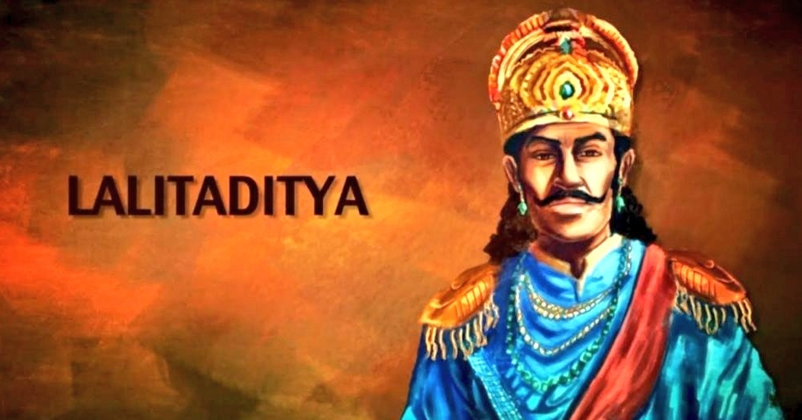
After leaving Baramulla, the Vitasta slowly narrows down, flowing over boulders in ferocious speed. The place was called in ancient times as Dvara, a mention of which is made by Kalhana. Presently the place is called Drung. On the left bank of the Vitasta, King Hushka built his capital Hushkapora. Lalitaditya Mukhtapida built a massive temple of Vishnu as well as a great Budhist Vihara there. Ksemagupta spent his last days at the two Muths he built at Hushapora.
The Kushan ruler Kanishka founded a city on the bank of Vitasta, half a mile above Ushkar. Some distance above the gorge in which the Vitasta goes down and rises up again as a river by its own right in the west Pakistan under the name of Jhelum, "Indradvadasi" festival used to be celebrated in ancient times. On this day presents and clothes were given away to the poor. This day is still observed in Kashmir under the same name "Inderbah" on the twelfth of the bright half of Bhadrapada but with a difference. It used to be a day of festivities and gaiety, but now this day has been reserved for manes. Sharada is performed there on the spot which is known as "Kanimaj" Kashmiri Kaniyasi-Mata Sanskrit. The name as such does not occur in any ancient text! even though Indradvadasi is mentioned in the Nilamata. The place has been called as Varahaksetra in general.
Vitasta flows out of Kashmir at Khadanyar. Vitasta Mahatmaya refers to the place as Khadanhara. Perhaps the place assumed its name from the great temple Khadana Vihar built by one of the queens, Khadana by name, of the King Meghavhana. River Karishi appeared in the north in Karnah area and became known as Krishan Ganga. It joins Vitasta at Jhelum village, now in Pakistan. It is because of the confluence of the two rivers at this point, the ongoing river was known as Jhelum. Srivara in his Rajatrangini has used Jhelum instead of Vitasta, for the first time.
From the day Shiva struck his trident to make way for the Vitasta to flow out of Vyeth Vothur, its source--- the Neel Nag, in the Veri Pargana, Vitasta has flowed down for centuries over which the Sanskrit civilization of Kashmir flourished. Hindus of Kashmir still observe the day Parvati manifested herself in the form of Vitasta at Vitastatra, now known Vyeth Vothur, on Bhadra Shukla Trayodashi the 13 lunar day of the month of Bhadrapada every year. The festival, now known as Vetha Truvah, is celebrated by making offerings of cakes made of rice floor while reading Sholkas from Vitasta Mahatmayas. In the evening, the Hindu women go down to the banks of the Vitasta and illuminate them with flickering earthen-ware lamps. Vitasta is the cradle of Sanskrit civilization of Kashmir.